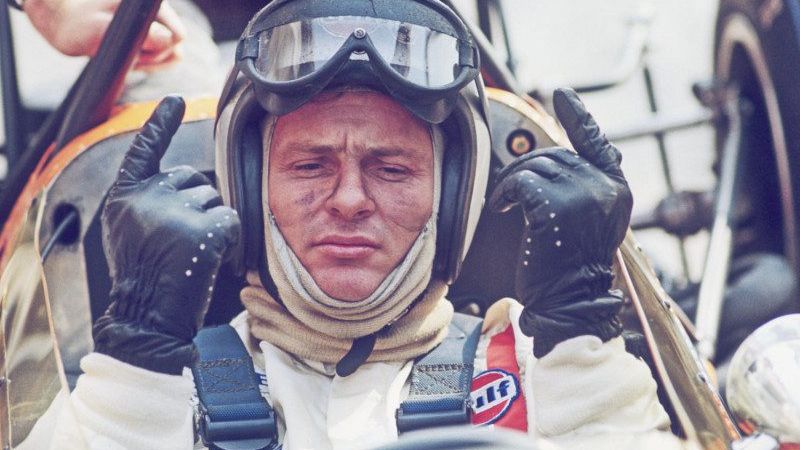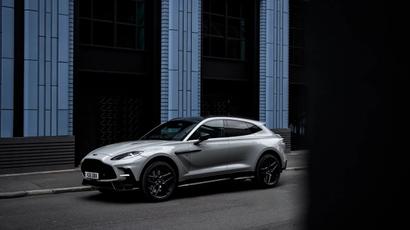

Behind the brand: McLaren
- Words: Charlie Thomas
Lying off an exit of one of Surrey’s many roundabouts is a familiar logo reading ‘McLaren’. If you head towards this and down a mysteriously empty two-lane road, things start to change. The grass is greener and perfectly neat, the road surface is unusually smooth and there are men in dark, boxy suits and black sunglasses who look suspiciously like FBI agents. Make it past them and you’d be forgiven for thinking you were heading towards a top-secret government research facility, but of course the McLaren Technology Centre is far more exciting than that. It’s 57,000 square feet of car-making wizardry – the automotive equivalent of Willa Wonka’s chocolate factory, you might say.
McLaren have been based at the McLaren Technology Centre since 2004. It was a culmination of years of planning and it now encompasses all of their efforts under one roof. Everything from the car’s paint to the exhaust mounts are conceived and produced in the vast space, which is large enough to house nine Boeing 747 jumbo jets. The McLaren-Honda Formula One team call it home too, and every F1 car since the 2004 season has been developed in-house, utilising the wind tunnels and simulator to dramatic effect. The culminations of McLaren’s recent success came in 2008, when Lewis Hamilton won the World Championship with a car now on display in the MTC alongside other historical machines, including Bruce McLaren’s first ever racer, a dinky Austin 7.
Indeed, it’s the historical element of the brand that is particularly interesting, and it’s something that McLaren themselves are very proud of. They were born out of Bruce McLaren’s deep passion for racing – a talented driver himself, he became the youngest ever Grand Prix winner, when he passed the checkered flag at the Sebring International Raceway first in 1959 aged just 22. It was his engineering skills that set him apart though, and he regularly tinkered with and improved his racing machines before and after competition. He wasn’t content with just competing on track, however.
Many think of the F1 as the first McLaren road car, but it was back in 1968 that Bruce himself made the M6 GT, a machine he envisioned to be the greatest production car of all. It laid the foundations for future McLaren road cars, with its light weight, lightning quick acceleration and focus on handling. Bruce may not have realised it at the time, but in producing the M6 GT he would directly inspire what many believe to be the greatest supercar of all time. He tragically passed away during testing at Goodwood in 1970, so never got to see or experience the McLaren F1 in all its glittering glory.
It was an unprecedented machine. A 6.1-litre V12 producing 627bhp, kerb weight of just 1140kg, 0-60mph time of 3.2 seconds and a record-breaking top speed of 240mph – the F1 had it all. It was the attention to detail though that would come to define McLaren’s road cars and indeed their entire philosophy. To save weight, a specially-designed CD player was used, weighing just 8kg, and the engine bay was famously lined with gold foil for ultimate thermal insulation. The brand’s current crop of supercars are just as meticulously detailed, too.
Whilst the F1 was a distinctly analogue machine, and one of the last truly great naturally-aspirated supercars, the brand rocketed into the 21st century with the MP4-12C. Now having evolved into the 650S and its hardcore cousin, the 675LT, McLaren’s mid-engined family is mind-bendingly fast, yet unmistakably useable – a trait that the Woking brand have adopted since day one. The already-iconic P1 takes this a step further though, in the way of a 903bhp, 0-124mph in 6.8-second package that miraculously manages to deliver an average combined fuel consumption of 34mpg. Numbers have always been a strong suit for McLaren, but this somewhat takes the biscuit.
2015 is set to be a big year for McLaren Automotive. The 675LT is due for delivery in the summer, and a new ‘entry level’ car, the 570S, has just been announced too, looking to rival the likes of the Porsche 911 and Audi R8. They aren’t resting on their laurels, which is an ethos that Bruce McLaren would be proud of: “It would be a waste of life to do nothing with one’s ability, for I feel that life is measured in achievement, not in years alone.” Bruce passed away at the age of 32, but in maximising his potential in the short time he had, he laid the foundations for one of the world’s greatest automotive manufactures. That’s quite an achievement indeed.
For more information, visit McLaren.


